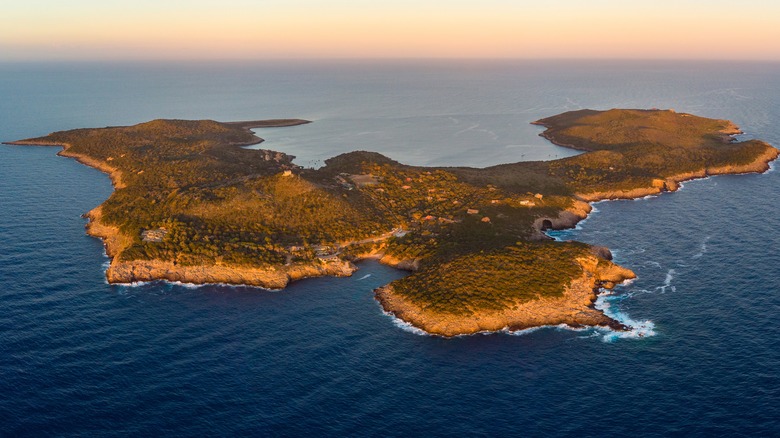One Of The Mediterranean's Best-Kept Secrets Is An Unspoiled, Car-Free Island In Italy
We may receive a commission on purchases made from links.
South of Elba, Giglio, and the other jewels that make up the seven beautiful Italian islands of the Tuscan Archipelago, Giannutri is a small car-free gem with crystal clear waters and the ruins of an ancient Roman villa. The island — shaped like a crescent — is only 2.6 square kilometers large and is home to only about 15 permanent residents — although this number quickly multiplies as tourists arrive in the summer. Part of the Tuscan Archipelago National Park, the island's few roads are only open to commercial vehicles and garbage trucks, so the only way to get around is on foot.
To get to Giannutri, you must leave Porto Santo Stefano in Monte Argentario, a promontory on Italy's western coast, about halfway between Rome and Pisa. One ferry ticket and one hour later, you'll arrive in Cala dello Spalmatoio, the gateway to the treasures of this little island, including more spectacular coves and the impressive ruins of Villa Domizia, a summer palace that dates back to the 2nd century A.D.
Here's everything you need to know about making the most of your time on Giannutri, like how to find the best snorkeling spots and visit the ancient ruins.
Visit the ruins of a Roman villa and its mythical mosaic
Once you disembark, it takes about 15 minutes to walk across the island to the ruins of Villa Domizia. It overlooks the turquoise waters of Cala Maestra. The whole complex covers about 12 acres of land, including a downhill path that goes straight to the water. In the ancient era, the whole island once belonged to the Ahenobarbi family, and the villa was built by its patriarch, Gnaeus Domitius Ahenobarbus, who also happened to be the father of the notorious Emperor Nero.
Among the ruins, you will find the remaining stones of the warehouses and servant quarters and the impressive Labyrinth Mosaic. The ancient black-and-white treasure depicting the myth of Theseus and the Minotaur was recently restored and brought back to the island after 30 years on display in a Florence museum.
The only way to visit the ruins is by booking a guided tour, which can be done through the park authority or on a combined mini-cruise excursion from a tour operator like MareGiglio. Some mini-cruises, which typically leave Porto Santo Stefano, are full-day excursions that offer stops in Giannutri as well as the neighboring island of Giglio.
Trekking and swimming in crystal-clear waters
Once you've soaked up the island's ancient history, you can relax with a swim in one of the many beautiful calas, or coves, that pepper the tiny island's coast. Cala Spalmatoio and Cala Maestra are the main swimming areas. Make use of your own snorkel if you happen to bring one, but some coves are impossible to reach without a boat – so a guided trekking and snorkeling tour with a tour operator like MareGigliois recommended. Alternatively, Argentario Divers is a dive center based in Porto Ercole that also offers snorkeling excursions to Giannutri and Giglio. Between the two islands, the underwater world offers opportunities for barracuda, amberjack, and moray eel sightings.
If you take the ferry to Giannutri for the day, you can satisfy your itchy feet with a hike to landmarks like the Capel Rosso Lighthouse or the panoramic views on the way to Punta San Francesco on the northeastern end of the island. Trekking is a great way to see more of Giannutri and appreciate why it's also sometimes called Seagull Island, as large bird colonies thrive among its pristine and protected cliffsides.
Once you've worked up an appetite, you can refuel back in Cala dello Spalmatoio at a classic Italian restaurant like La Vela or, if you decide you need more time to enjoy the island, book a room at one of the few on-island accommodations like Casa Diana, a charming bed-and-breakfast.


